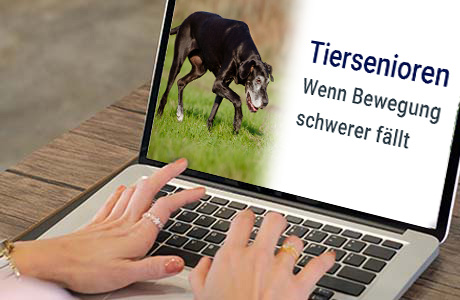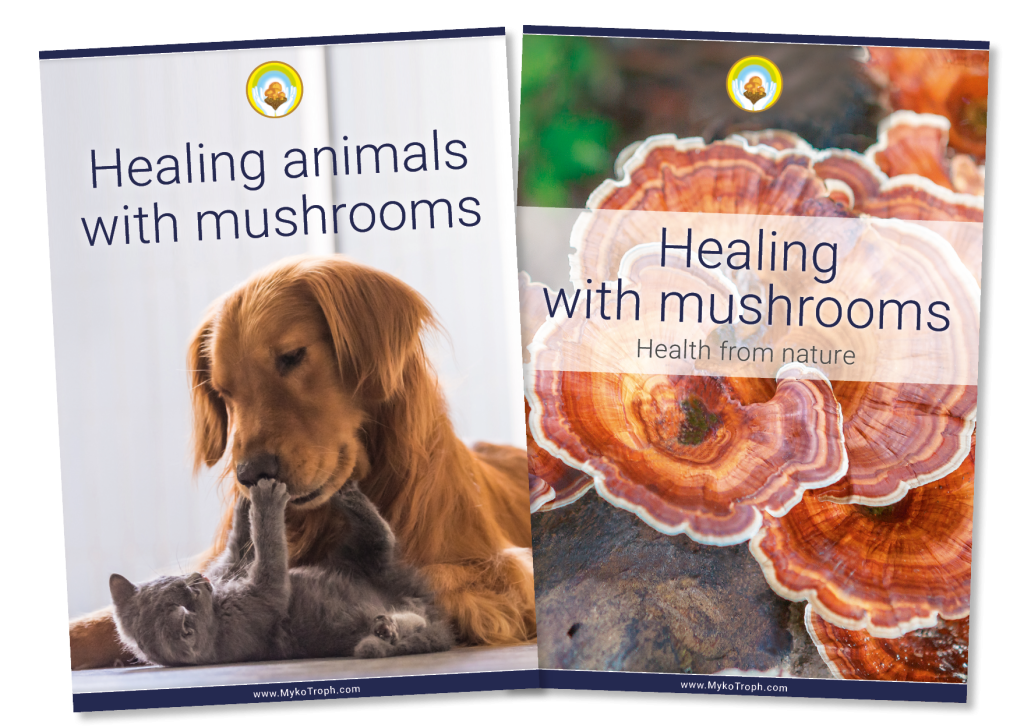
Each animal is unique!
Our experienced team will be happy to advise you in detail and free of charge on all matters relating to your pet’s health :
Osteoarthritis in dogs - diseases of the musculoskeletal system
Less movement and new environmental factors
May 31, 2021
Petra Remsing – veterinary practitioner
In the course of development, the conditions of keeping our pets have changed. Whereas in the past cats had the task of catching mice and could roam through meadows and fields to their heart’s content, a large proportion of cats today are house cats due to changes in living conditions. Many dogs lead a life of couch potato, walks are often done in a rush after work.
While Bello has been waiting all day for this experience, master wants to finish the walk as soon as possible after a long day at work. So it is not surprising if the dog sometimes can no longer withstand this “pressure”. Due to the relatively early restriction of freedom of movement and changed environmental conditions, musculoskeletal diseases occur more quickly today.
Free information now unlock on the topic "animal seniors
- Recording of our webinar with animal healer Petra Friedrich

After you submit the completed form, you will be able to view the information immediately and will also receive an email with a download link.
The most important diseases of the musculoskeletal system include joint diseases and diseases of the spine. The joint diseases arthritis and arthrosis are very common in dogs and cats.
Arthritis in animals
Arthritis is an acute inflammation of the joints. Damage or injury can be considered as the cause. The affected joint is almost always swollen, tender, feels hot, and is spared.
Arthrosis or arthrosis deformans
In osteoarthritis, the focus is not on inflammation, but rather on wear and tear of the joints. It develops in older animals due to the natural aging process, while in young animals it often develops as a result of growth disorders or hereditary predisposition, for example in osteochondrosis or hip dysplasia.
At the beginning of the disease, excessive or increased stress or insufficient supply of cartilage tissue causes damage to the cartilage. The previously shiny, smooth cartilage layer becomes roughened and dull in the damaged area. Small cartilage ponds detach and float freely in the joint space. At this stage, the animal does not show lameness or pain symptoms because cartilage cells do not have nerves.
Typical symptoms
The abraded cartilage particles exposed in the joint space allow the cartilage damage to progress. They can also lead to inflammation of the synovial mucosa – this is the inner mucous membrane of the joint capsule. This recurrent inflammation is also called synovitis. It is the cause of pain and joint effusion. This phase of the disease is then referred to as activated osteoarthritis.
Now lameness and gentle postures also occur, and the animals may lick or gnaw the affected joint area. Joint effusions and typical signs of inflammation such as warmth, pain and swelling occur.
Simply request free information brochures now!

After you have sent the completed form, you will receive an e-mail with a download link.
Change in synovial fluid
The synovium (synovial fluid or synovial fluid) increasingly thickens in response to the increased abrasion in the joint, so that blood flow and thus the supply of nutrients to the joint are increasingly restricted. With each movement of the joint, the free cartilage particles continue to grind away the cartilage like sandpaper, and damage to the bone occurs over time. This can progress to the point where instead of the cartilage covering, the unprotected bones are now sliding on top of each other.
Bone bulge formation occurs in the marginal zone area of the well-vascularized bones. This results in small bony attachments, called osteophytes, which grow into the joint space and form at the edges. Thus, by increasing the joint surface, the body attempts to better distribute the pressure that the bones create on the joint. However, this does not succeed.
Both the osteophytes and the uneven wear of the cartilage cause the condyle and the socket to no longer fit together. The pressure distribution thus becomes more and more uneven until the joint finally “subluxates”: The head and socket thus shift and the deformation is now also externally visible. In this final stage of osteoarthritis, the deformation of the joints increases more and more until the joints finally become completely stiff and immobile.

Each animal is unique!
Our experienced team will be happy to advise you in detail and free of charge on all matters relating to the health of your pet:
Arthroses of various joints
- Spondylarthroses in the vertebral joints
- Gonarthrosis in the knee joints
- Coxarthrosis in the hip joints
- Omarthrosis in the shoulder joints
Arthritic changes also frequently form in other joints, for example in the ankle, forefoot or hindfoot joints.
Spine may be affected
In the area of the spine, besides the lumbar spine, the cervical spine is most often affected. The degeneration of the intervertebral discs favors the arthrosis of the vertebral joints. With age, the gelatinous core of the disc dries and thus loses height. As a result, the joints between the vertebral arches and articular processes lose their position relative to each other. Thus, there is an overload and malpositions and the formation of arthrosis.
Typical symptoms of osteoarthritis are start-up pain after rest, reduced activity of the animal, joint stiffness, and later on pain on exertion and continuous pain. Diagnosis is made by a careful lameness examination, palpation and mobility testing, and radiograph. A CT (computed tomography) scan or arthroscopy may be required to better identify changes.
Conventional medical therapy is carried out with painkillers and anti-inflammatory drugs (non-steroidal analgesics or anti-inflammatory drugs) such as Rimadyl and Metacam. In addition to cartilage-preserving preparations, such as hyaluronic acid and chondroitin sulfate, joint replacement or gold acupuncture is often used.
Vital mushrooms for arthritis and arthrosis
Basic mushrooms for musculoskeletal disorders are reishi and shiitake. Reishi has anti-inflammatory and cortisone-like effects. It also improves blood circulation, oxygen supply and blood flow in the joint. Together with shiitake, it has a strong analgesic effect. Shiitake is able to regress deformities of the limbs. Auricularia promotes blood circulation, improves the flow of blood and thus oxygen supply.
It also has a moisturizing and anti-inflammatory effect on the joint mucosa. Pleurotus strengthens tendons, ligaments and cartilage. It improves muscle function and promotes bone formation. In the case of joint swelling, Polyporus supports the lymph.
For mushroom powders there are many suppliers
You will find trustworthy suppliers with controlled organic cultivation in Germany, but unfortunately also less recommendable importers of cheap goods. Read what is important when buying.
DO YOU HAVE ANY QUESTIONS?
We will gladly take time for you. In our free consultation we answer individually and personally all your questions about the health of your pet under:
